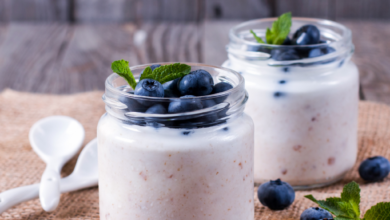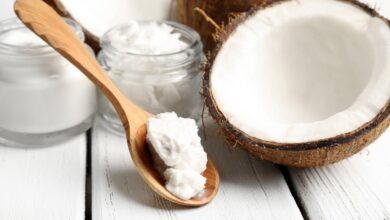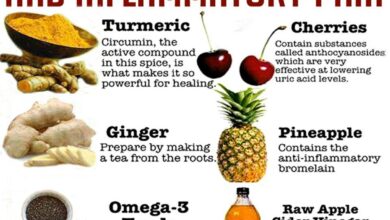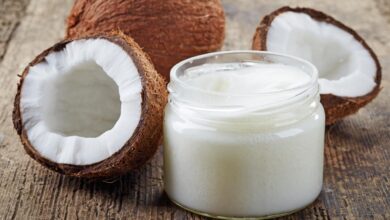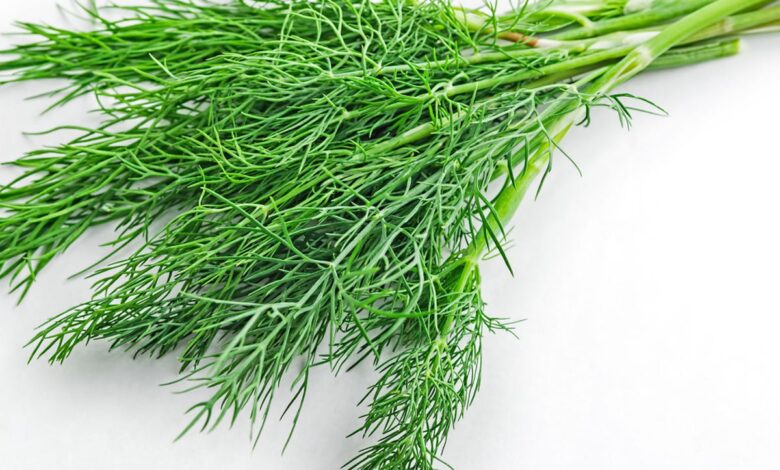
Is Dill a Super Herb? Discover Its Amazing Benefits
Is dill a super herb? You might know it as the fragrant green garnish that adds a burst of flavor to your favorite dishes, but did you know this humble herb packs a powerful punch when it comes to health benefits?
From aiding digestion to potentially reducing inflammation, dill has been used for centuries in traditional medicine and is now gaining attention for its potential role in modern healthcare.
Let’s delve into the fascinating world of dill, exploring its history, culinary uses, nutritional value, and the scientific evidence supporting its remarkable health properties.
Dill
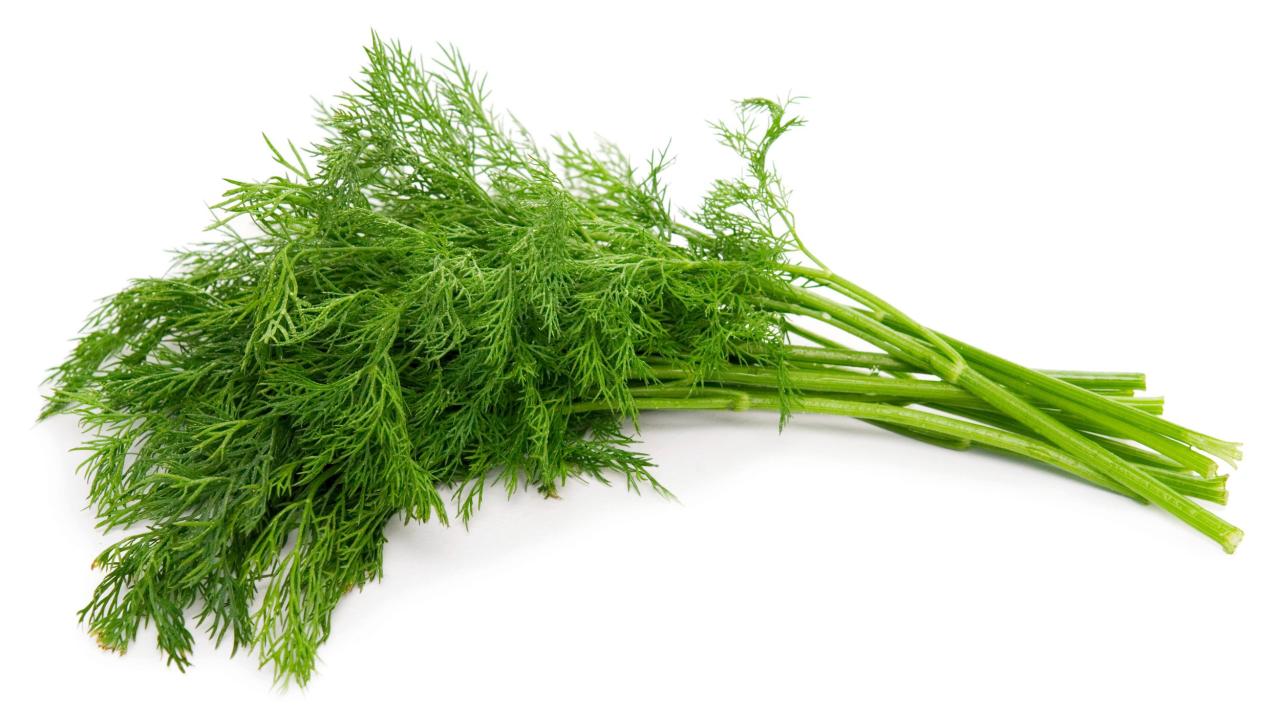
Dill, a feathery green herb with a distinctive aroma and flavor, has been a culinary staple for centuries. Its delicate, anise-like taste adds a unique dimension to a wide range of dishes, making it a beloved ingredient in cuisines worldwide.
History and Origin
Dill’s history dates back thousands of years, with its origins traced to the Mediterranean region. It is believed to have been cultivated in ancient Egypt, Greece, and Rome, where it was used not only for its culinary properties but also for its medicinal benefits.
The herb’s name is derived from the Old Norse word “dilla,” which means “to soothe,” reflecting its traditional use in calming and digestive remedies.
Varieties of Dill
There are two main varieties of dill:
- Common Dill (Anethum graveolens): This is the most widely cultivated variety, characterized by its feathery leaves and small, yellow flowers. It is commonly used fresh in cooking and is also available dried.
- Bouquet Dill (Anethum graveolens ‘Bouquet’): This variety is known for its larger, more robust leaves and its tendency to produce a more intense flavor. It is often preferred for fresh use in salads and garnishes.
Culinary Uses of Dill
Dill’s versatility in the kitchen is undeniable. It finds its place in various cuisines around the world, adding a touch of freshness and complexity to dishes.
- Scandinavian Cuisine: Dill is an essential ingredient in Swedish and Danish cuisine, particularly in dishes like gravlax (cured salmon), dill sauce, and potato salad.
- Eastern European Cuisine: Dill is widely used in Russian, Ukrainian, and Polish cuisine, where it features in soups, salads, and pickled vegetables.
- Middle Eastern Cuisine: Dill is a common ingredient in Middle Eastern cuisine, often used in salads, dips, and sauces.
- American Cuisine: Dill is popular in American cuisine, particularly in dishes like dill pickles, dill sauce, and dill-infused seafood.
Nutritional Content of Fresh Dill
Dill is a nutrient-rich herb, offering a variety of vitamins and minerals. Here’s a breakdown of its nutritional content per 100 grams:
| Nutrient | Amount |
|---|---|
| Calories | 23 |
| Protein | 2.9 g |
| Carbohydrates | 3.6 g |
| Fiber | 2.6 g |
| Vitamin C | 46 mg |
| Vitamin A | 1000 IU |
| Calcium | 142 mg |
| Iron | 2.1 mg |
Dill’s Health Benefits
Dill, a fragrant herb with a delicate flavor, is not only a culinary delight but also boasts a range of potential health benefits. From aiding digestion to acting as an antioxidant, dill has garnered attention for its potential therapeutic properties.
Antioxidant Properties
Antioxidants are compounds that protect cells from damage caused by free radicals, which are unstable molecules that can contribute to various health issues. Dill is rich in antioxidants, including flavonoids, carotenoids, and vitamin C. These antioxidants may help reduce the risk of chronic diseases such as heart disease, cancer, and Alzheimer’s disease.
Digestive Health
Dill has long been recognized for its ability to aid digestion. It contains compounds that stimulate the production of digestive juices, which can help break down food more efficiently. Additionally, dill may help relieve symptoms of indigestion, bloating, and gas.
Blood Sugar Management
Preliminary research suggests that dill may have a positive impact on blood sugar levels. Some studies have shown that dill extract can help lower blood sugar levels in individuals with type 2 diabetes. However, more research is needed to confirm these findings.
Anti-Inflammatory Properties
Inflammation is a natural process that helps the body heal from injuries or infections. However, chronic inflammation can contribute to a range of health problems. Dill contains compounds with anti-inflammatory properties that may help reduce inflammation in the body.
Nutritional Profile
| Nutrient | Dill (100g) | Parsley (100g) | Basil (100g) | Oregano (100g) |
|---|---|---|---|---|
| Calories | 22 | 36 | 23 | 28 |
| Vitamin C | 14mg | 130mg | 10mg | 10mg |
| Vitamin A | 240IU | 1100IU | 150IU | 200IU |
| Iron | 1.4mg | 1.5mg | 2.1mg | 2.3mg |
| Calcium | 140mg | 170mg | 180mg | 190mg |
Dill in Traditional Medicine
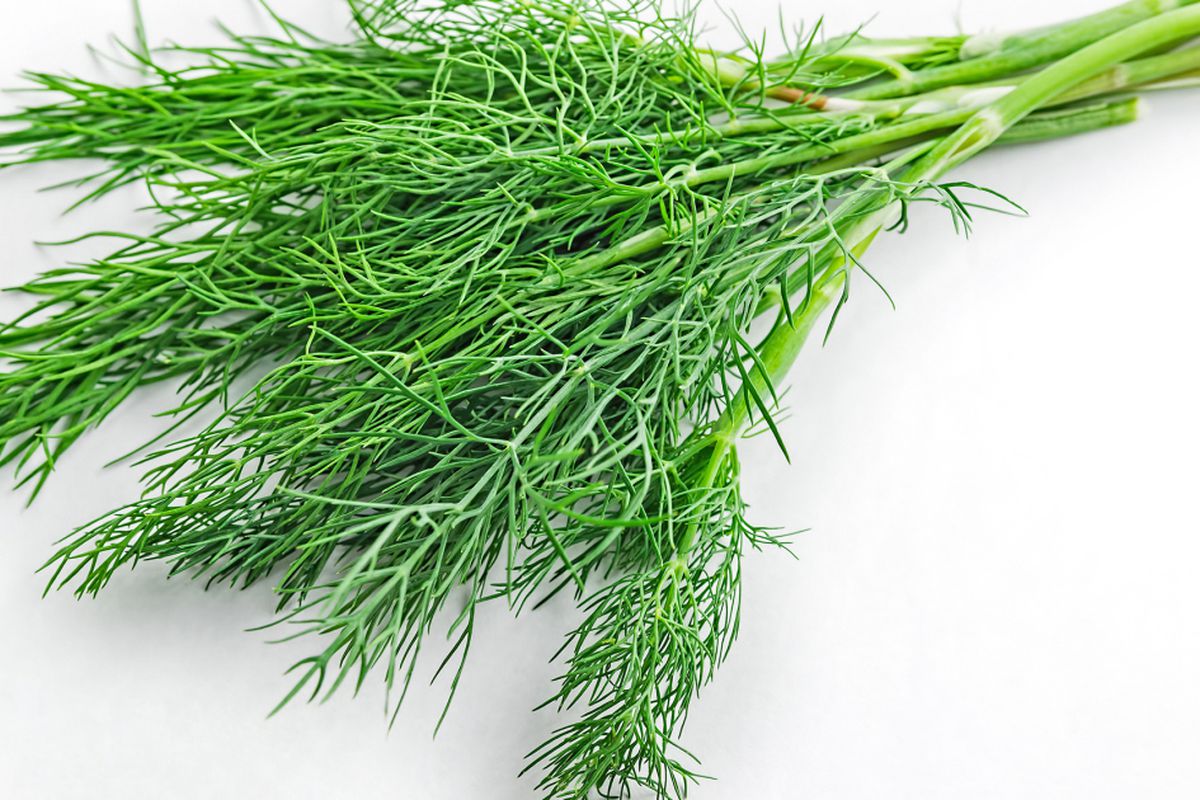
Dill’s medicinal properties have been recognized and utilized for centuries in various cultures around the world. Its historical use spans across traditional medicine systems, where it has been employed for a wide range of ailments.
Traditional Remedies Using Dill
Traditional medicine systems have long valued dill for its therapeutic potential. It has been used to address various health concerns, often incorporating it into teas, tinctures, and poultices.
Is dill a super herb? It’s definitely packed with nutrients, but I’m more interested in how it can liven up a dish. Speaking of livening things up, I recently read about how a vacation helped Charlotte lose half her body weight! That story was so inspiring, and it reminded me that sometimes a change of scenery can be just what we need.
Anyway, back to dill. I’m going to try adding some to my next salmon recipe, and see if it’s a super herb in my book!
- Digestive Issues:Dill has been traditionally used to alleviate digestive discomfort, including bloating, gas, and indigestion. Its carminative properties are believed to help relax the digestive tract and promote the expulsion of gas.
- Anxiety and Sleep:Some traditional practices suggest that dill can help calm the nerves and induce relaxation. It has been used to address anxiety and promote restful sleep. Its calming effects are attributed to its potential to reduce stress hormones.
- Skin Conditions:Dill’s antimicrobial and anti-inflammatory properties have led to its traditional use in treating skin conditions such as eczema, acne, and rashes. It has been applied topically in the form of poultices or infused oils.
- Lactation Support:In some cultures, dill has been traditionally used to increase breast milk production. Its galactagogue properties are believed to stimulate milk flow.
Cultural Significance of Dill
Dill holds cultural significance in various societies, often intertwined with traditional medicine practices.
- Ancient Egypt:In ancient Egypt, dill was considered a sacred herb and was used in religious ceremonies and for medicinal purposes. It was believed to have protective powers and was often included in burial rituals.
- Ancient Greece:In ancient Greece, dill was used as a culinary herb and for medicinal purposes. It was believed to have calming and digestive properties. The Greek physician Dioscorides, who lived in the 1st century AD, wrote extensively about dill’s medicinal uses in his book “De Materia Medica.”
- Traditional Chinese Medicine:In traditional Chinese medicine, dill is known as “Xiao Hui Xiang” and is used to treat digestive disorders, reduce inflammation, and promote relaxation.
Traditional Uses of Dill Across Cultures
| Culture | Traditional Uses |
|---|---|
| Ancient Egypt | Used in religious ceremonies, for medicinal purposes, and in burial rituals. |
| Ancient Greece | Used as a culinary herb and for medicinal purposes, believed to have calming and digestive properties. |
| Traditional Chinese Medicine | Used to treat digestive disorders, reduce inflammation, and promote relaxation. |
| India | Used in Ayurveda to treat digestive issues, anxiety, and skin conditions. |
| Europe | Used traditionally for digestive issues, as a carminative, and for its calming properties. |
Dill in Modern Science
Modern scientific research is shedding light on the potential health benefits of dill, confirming its long-standing reputation as a medicinal herb. Scientists are unraveling the complex mechanisms by which dill exerts its therapeutic effects, revealing the presence of bioactive compounds responsible for its pharmacological activity.
This scientific exploration opens doors to potential applications of dill in modern healthcare, paving the way for innovative therapeutic strategies.
Dill, with its delicate flavor and feathery leaves, is often considered a humble herb. But did you know it packs a powerful punch of antioxidants? As a registered dietitian, I’ve learned that the power of plants often goes beyond what meets the eye.
In fact, I was surprised to learn 3 surprising takeaways about being a registered dietitian that really opened my eyes to the fascinating world of nutrition. So, next time you’re adding dill to your dishes, remember that you’re not just adding flavor, you’re adding a dose of nutritional goodness!
Bioactive Compounds in Dill
Dill is rich in a diverse array of bioactive compounds, including volatile oils, flavonoids, and phenolic acids, which contribute to its therapeutic effects. These compounds have been identified through various analytical techniques, including gas chromatography-mass spectrometry (GC-MS) and high-performance liquid chromatography (HPLC).
Dill, with its delicate flavor and feathery leaves, is often overlooked as a culinary herb. But it’s more than just a garnish! Dill is packed with antioxidants and may even help with digestion. While I’m busy exploring the world of herbs, I’m also drawn to the challenge of pushing my physical limits.
If you’re looking to conquer a new challenge, check out everything you need to know about ultra walking. After all, a healthy body needs a healthy mind, and that includes embracing new adventures! So, whether it’s a dill-icious meal or a long walk, let’s explore the world with open minds and adventurous spirits.
- Volatile Oils:Dill’s characteristic aroma is attributed to its volatile oils, primarily composed of carvone, limonene, and anethole. These compounds have demonstrated antioxidant, anti-inflammatory, and antimicrobial properties, contributing to dill’s diverse health benefits.
- Flavonoids:Dill is a good source of flavonoids, such as quercetin, luteolin, and apigenin. These compounds are known for their potent antioxidant activity, protecting cells from damage caused by free radicals. They also exhibit anti-inflammatory and anti-cancer properties, contributing to dill’s potential role in disease prevention.
- Phenolic Acids:Dill contains various phenolic acids, including caffeic acid, rosmarinic acid, and ferulic acid. These compounds possess antioxidant and anti-inflammatory properties, contributing to dill’s overall health benefits.
Mechanisms of Action
The therapeutic effects of dill are attributed to the combined actions of its bioactive compounds. These compounds exert their effects through various mechanisms, including:
- Antioxidant Activity:Dill’s rich content of antioxidants, such as flavonoids and phenolic acids, helps neutralize free radicals, protecting cells from oxidative stress. Oxidative stress is implicated in various chronic diseases, including cancer, cardiovascular disease, and neurodegenerative disorders.
- Anti-inflammatory Activity:Dill’s anti-inflammatory properties are attributed to its volatile oils and flavonoids, which inhibit the production of pro-inflammatory mediators. Inflammation is a natural immune response, but chronic inflammation can contribute to various health problems.
- Antimicrobial Activity:Dill’s volatile oils, particularly carvone, exhibit antimicrobial activity against a wide range of bacteria, fungi, and viruses. This property contributes to dill’s potential use as a natural antimicrobial agent.
- Gastroprotective Effects:Dill has been shown to protect the gastrointestinal tract from damage caused by various factors, such as ulcers and inflammation. This effect is attributed to its anti-inflammatory properties and its ability to stimulate the production of protective mucus in the stomach.
Potential Applications in Modern Healthcare, Is dill a super herb
The growing body of scientific evidence supporting dill’s health benefits has led to increasing interest in its potential applications in modern healthcare. Research is exploring the use of dill in various therapeutic areas, including:
- Cancer Prevention and Treatment:Studies have suggested that dill’s antioxidant and anti-inflammatory properties may contribute to cancer prevention and treatment. Dill’s flavonoids and phenolic acids have shown potential in inhibiting cancer cell growth and promoting apoptosis (programmed cell death) in cancer cells.
- Cardiovascular Health:Dill’s antioxidant and anti-inflammatory properties may contribute to cardiovascular health by reducing oxidative stress and inflammation in blood vessels. Studies have suggested that dill may help lower blood pressure and cholesterol levels, reducing the risk of heart disease.
- Gastrointestinal Health:Dill has been traditionally used to alleviate digestive problems, and scientific research is confirming its potential benefits for gastrointestinal health. Dill’s anti-inflammatory properties may help reduce inflammation in the gut, while its carminative effects may help relieve bloating and gas.
- Mental Health:Some studies suggest that dill may have calming effects on the nervous system. Dill’s volatile oils, particularly carvone, have been shown to have anxiolytic (anxiety-reducing) and sedative effects in animal studies. Further research is needed to explore dill’s potential role in mental health.
Growing and Using Dill: Is Dill A Super Herb
Dill is a versatile herb that can easily be grown at home, adding a fresh, bright flavor to your dishes. With a little care and attention, you can enjoy a steady supply of dill throughout the growing season.
Growing Dill at Home
Dill is a relatively easy herb to grow. It prefers full sun and well-drained soil. Here are some tips for growing dill at home:
- Start seeds indoors: Dill seeds can be started indoors 4-6 weeks before the last frost. Sow seeds about 1/4 inch deep in seed starting trays or pots filled with seed starting mix. Keep the soil moist and warm.
- Direct sow outdoors: Dill seeds can also be sown directly outdoors after the last frost. Sow seeds 1/4 inch deep and 12 inches apart. Thin seedlings to 6 inches apart.
- Water regularly: Dill needs regular watering, especially during dry periods. Water deeply and allow the soil to dry slightly between waterings.
- Fertilize sparingly: Dill is not a heavy feeder, but you can give it a light application of fertilizer once or twice during the growing season.
- Harvest regularly: Dill is ready to harvest when the leaves are about 6 inches tall. Cut the stems just above the soil line. Harvesting regularly will encourage the plant to produce more leaves.
Harvesting and Storing Fresh Dill
Dill is best harvested in the morning, after the dew has dried. Cut the stems just above the soil line. To store fresh dill, wrap the stems in a damp paper towel and store them in a plastic bag in the refrigerator.
Dill can also be frozen. To freeze dill, chop the leaves and place them in a freezer-safe bag.
Incorporating Dill into Recipes
Dill adds a bright, fresh flavor to a variety of dishes. Here are some ways to incorporate dill into your recipes:
- Add dill to salads: Chopped dill can be added to salads for a fresh, herbal flavor.
- Use dill in dips and spreads: Dill is a classic ingredient in dips and spreads, such as tzatziki sauce and dill dip.
- Flavor soups and stews: Dill can be added to soups and stews to enhance their flavor. It is particularly well-suited to creamy soups and stews, such as potato soup and cream of mushroom soup.
- Garnish fish and seafood: Dill is a traditional garnish for fish and seafood. It can be used to garnish grilled fish, baked fish, and seafood salads.
- Add dill to sauces and dressings: Dill can be added to sauces and dressings to give them a bright, fresh flavor. It is particularly well-suited to sauces and dressings that are served with fish, chicken, or vegetables.
Recipes Featuring Dill
Here is a table showcasing some popular recipes featuring dill as a key ingredient:
| Recipe | Description |
|---|---|
| Tzatziki Sauce | A classic Greek yogurt dip made with dill, cucumber, garlic, and lemon juice. |
| Dill Pickles | Crunchy pickles made with dill, vinegar, and spices. |
| Dill-Roasted Salmon | Salmon roasted with dill, lemon, and garlic. |
| Creamy Dill Soup | A creamy soup made with potatoes, onions, and dill. |
| Dill-Lemon Chicken | Chicken breasts marinated in a dill-lemon sauce and then baked or grilled. |
Final Summary
Whether you’re looking to enhance your culinary creations or explore natural ways to support your well-being, dill is a versatile and valuable addition to your life. Its unique flavor, impressive nutritional profile, and potential health benefits make it a true super herb worth celebrating.
So, next time you’re in the kitchen, reach for a sprig of dill and discover the magic it can bring to your meals and your health.

